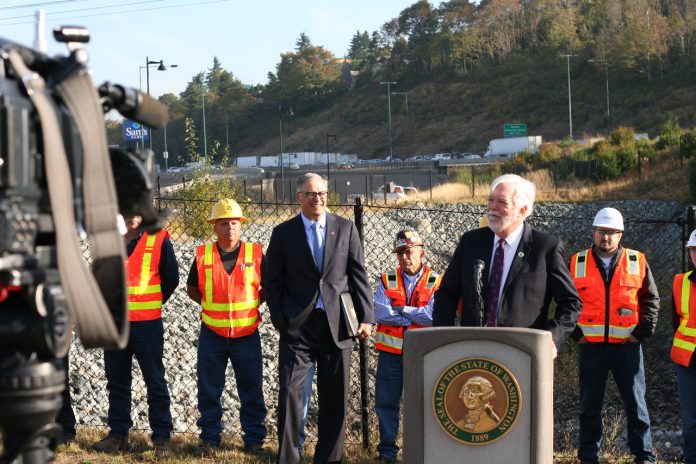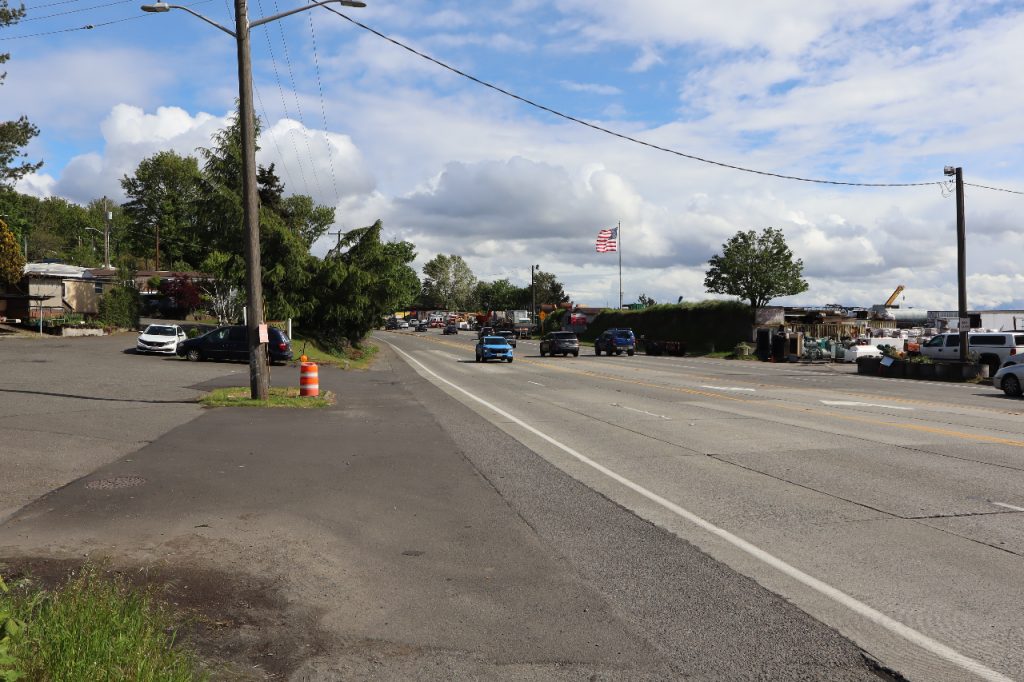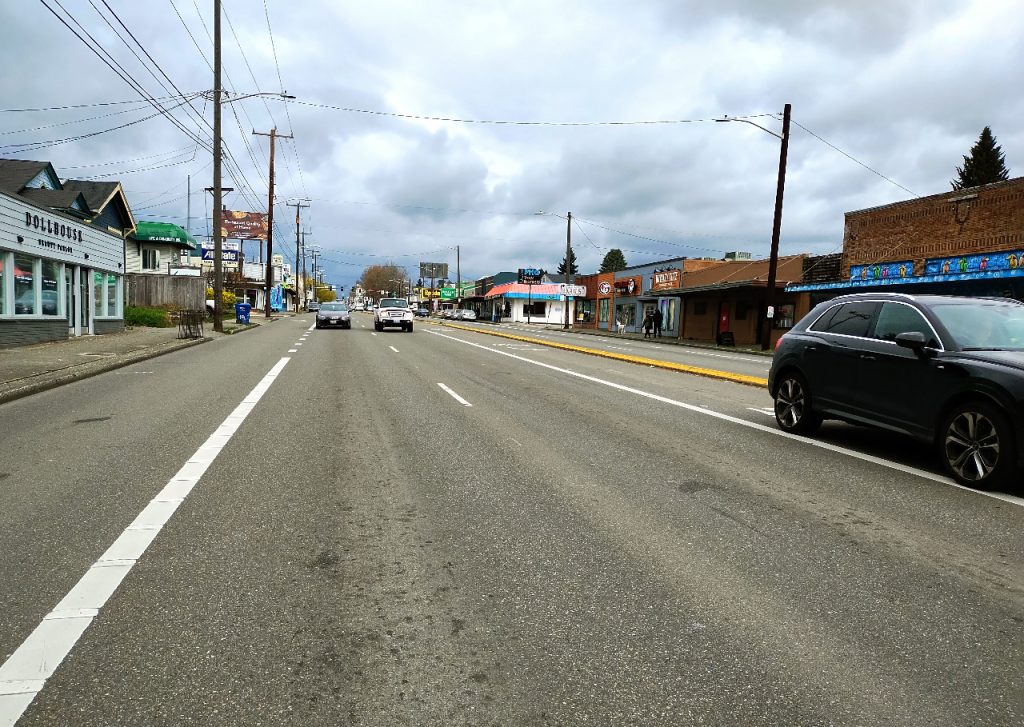
Washington transportation secretary Roger Millar is pushing the state legislature to find a way to fund urgently needed improvements to the hundreds of miles of state highways that run through the state’s population centers. Dubbed “stroads” — places trying to be both local streets and high-speed roads at the same time — these types of highways are the deadliest places to travel in Washington state across modes. Nonetheless, no dedicated funding source exists to make safety and access improvements to them, even as hundreds of millions per year are spent on expanding the state highway network.
The request comes as the Washington State Department of Transportation (WSDOT) is preparing for the upcoming legislative session, and lawmakers get to work on the state’s budget. In the coming months, Governor Jay Inslee’s office will present its final budget proposal to the legislature, but that budget can’t account for all of WSDOT’s unfunded needs. Holes need to be plugged to balance the annual budget, and it will likely take a standalone transportation package to tackle those significant outstanding needs.
Next session, it will have been just three years since Move Ahead Washington, the last statewide transportation package was approved, but the state’s transportation needs continue to mount even as many transportation-specific revenue sources stagnate or decline.
While initial data available so far in 2024 shows a slight decline of 11.7% in statewide traffic fatalities compared to the first six months of 2023, that still translates to someone losing their life on Washington’s transportation system every 13 hours. Millar has been touting the need to focus on making these types of roads safer, but until now that had not been a concrete proposal to the legislature with cost estimates.

“We have about 1,100 miles of state highway that serve urbanized areas or suburbanized areas — everything from Aurora [Avenue] to State Route 7 in Parkland and Division Street in Spokane,” Millar told The Urbanist “The fatality rate on those facilities is twice the state average. The serious injury rate is over three times the state average. And what we’ve recommended is that we ought to be spending about $300 million a year to just systematically go through, and make the safety improvements, multimodal safety improvements.”
These stroads, or “legacy highways” as others call them, have been receiving increasing scrutiny, with the Federal Highway Administration (FHWA) specifically issuing guidance to state governments letting them know that funding from the 2021 Infrastructure Investment and Jobs Act (IIJA) is available to specifically fund improvements that would repair the damage these roadways are currently doing.
“Across the country, many highways that were built decades ago need to be transformed to meet modern safety standards, ensure access for everyone using them, and serve as a centerpiece of community economic revitalization,” the FHWA noted in its guidance. “The modernization of these roads can improve safety for all people who use the roadways, including those who are outside of a vehicle such as pedestrians and bicyclists. Upgrades can also spur development and housing investment, and provide better access for everyone using the road.”

Millar noted that the legislature often responds to safety needs along surface-running state highways in a very piecemeal fashion. “It’s happening now, something horrible happens, and the legislature directs us to work on State Route 7 in Parkland, or we’ve got a little bit of money to work on small part of Aurora, but we really need to be systematic about it. We’ve got 1,000 miles, let’s get started.”
WSDOT is also set to ask the legislature for $300 million annually to fund preservation work on the state’s highways and bridges, work that would also come with safety improvements thanks to Move Ahead Washington’s Complete Streets mandate. Preservation work extends the life of state facilities, and, with the mandate, WSDOT is required to evaluate facilities for missing pedestrian and bike infrastructure, as well as other needed safety infrastructure. That $300 million would still be well short of what’s actually needed to keep the state highways in a state of good repair, with the current deficit shortfall at $1 billion per year, but would represent a much more significant down payment than the status quo.
Currently, 230 projects around the state are being eyed for Complete Streets improvements, but without a significant increase in preservation funding, many of those will sit on a shelf. Earlier this year, the department partnered with other state agencies to request grant funding for Complete Streets, touting the carbon reduction benefits of mode shift, but that grant request wasn’t successful.
“We are implementing Complete Streets as we can with the funding we have,” Millar said. “The problem is almost without exception, all of the funding that’s been identified by the legislature in the 21st century was identified for a specific list of earmarked construction projects. The money is in buckets for each of those projects, and I can’t touch it for anything else. So when I get my preservation budget, it is woefully inadequate to the task. So […] we prioritize the higher speed facilities first, the facilities that have more of the economy on them first. And that means that there is no money in [the] budget to address the state highway that happens to be Main Street in Seattle or anywhere else […] because we’re not doing that work. If we were doing that work, we would be doing the Complete Streets as a part of that.”
If the legislature were to take Millar’s advice and invest in both preservation funding and standalone funding to fix the state’s legacy highways, that would represent a big step forward for multimodal infrastructure and safety investments in Washington State, and kick the state’s position as a leader in sustainable transportation into a higher gear. However, budget writers face many other competing priorities, including funding for court-ordered fish barrier removal, new ferries for an ailing state fleet, and a laundry list of highway expansion projects that lawmakers are eyeing in their own districts. But more than at any time in recent memory, the idea of finally tackling Washington’s stroads is being treated as a serious proposal.
Ryan Packer has been writing for The Urbanist since 2015, and currently reports full-time as Contributing Editor. Their beats are transportation, land use, public space, traffic safety, and obscure community meetings. Packer has also reported for other regional outlets including Capitol Hill Seattle, BikePortland, Seattle Met, and PubliCola. They live in the Capitol Hill neighborhood of Seattle.


